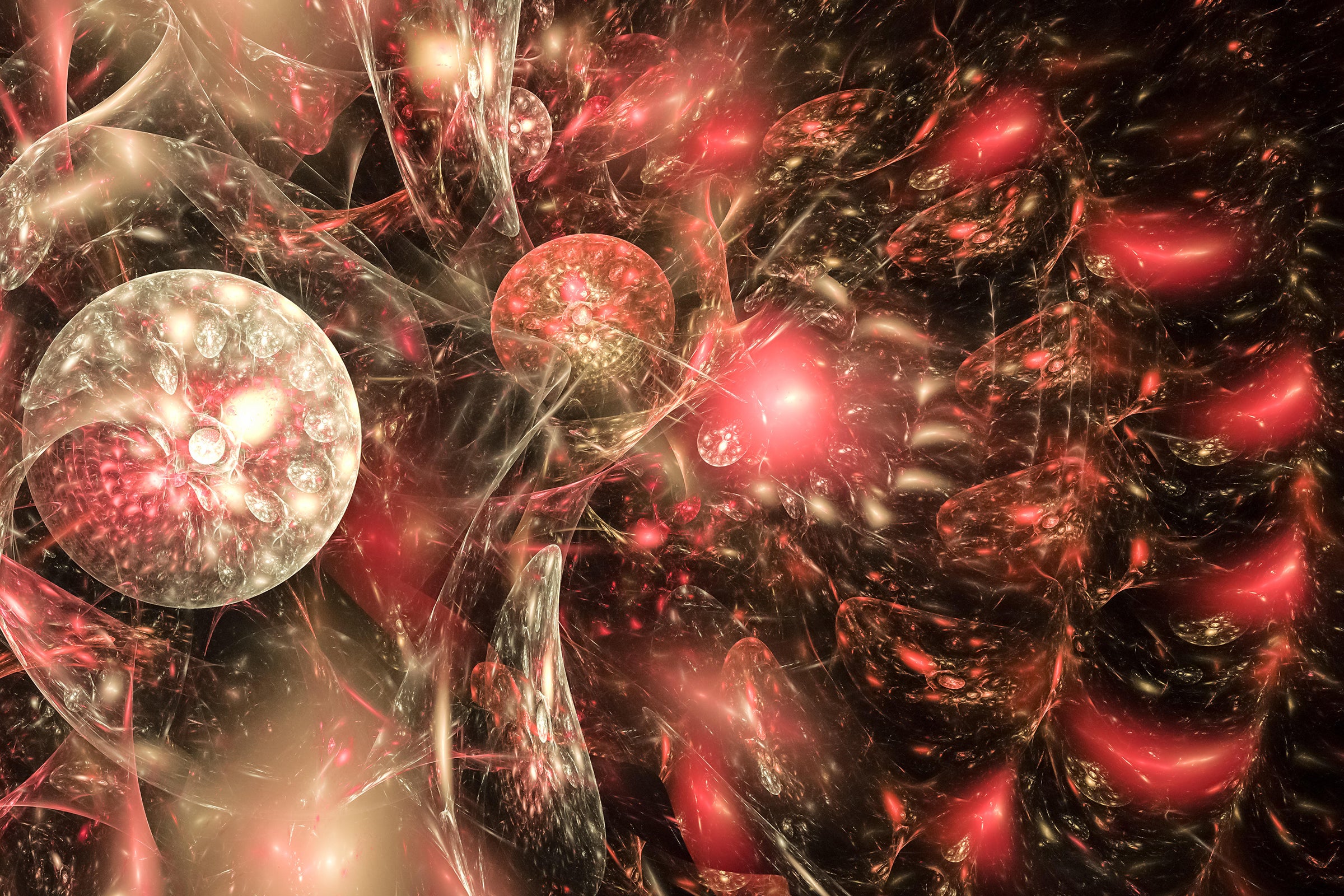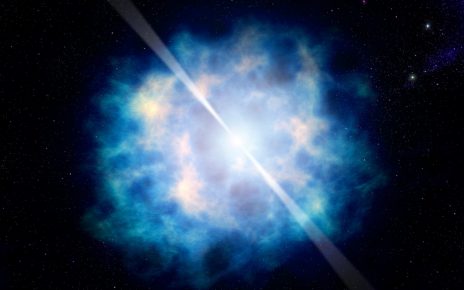
We exist, and we are living creatures. It follows that the universe we live in must be compatible with the existence of life. However, as scientists have studied the fundamental principles that govern our universe, they have discovered that the odds of a universe like ours being compatible with life are astronomically low. We can model what the universe would have looked like if its constants—the strength of gravity, the mass of an electron, the cosmological constant—had been slightly different. What has become clear is that, across a huge range of these constants, they had to have pretty much exactly the values they had in order for life to be possible. The physicist Lee Smolin has calculated that the odds of life-compatible numbers coming up by chance is 1 in 10229.
Physicists refer to this discovery as the “fine-tuning” of physics for life. What should we make of it? Some take this to be evidence of nothing other than our good fortune. But many prominent scientists—Martin Rees, Alan Guth, Max Tegmark—have taken it to be evidence that we live in a multiverse: that our universe is just one of a huge, perhaps infinite, ensemble of worlds. The hope is that this allows us to give a “monkeys on typewriters” explanation of the fine-tuning. If you have enough monkeys randomly jabbing away on typewriters, it becomes not so improbable that one will happen to write a bit of English. By analogy, if there are enough universes, with enough variation in the numbers in their physics, then it becomes statistically likely that one will happen to have the right numbers for life.
This explanation makes intuitive sense. However, experts in the mathematics of probability have identified the inference from the fine-tuning to the multiverse as an instance of fallacious reasoning. Specifically, multiverse theorists commit the inverse gambler’s fallacy, which is a slight twist on the regular gambler’s fallacy. In the regular gambler’s fallacy, the gambler has been at the casino all night and has had a terrible run of bad luck. She thinks to herself, “My next roll of the dice is bound to be a good one, as it’s unlikely I’d roll badly all night!” This is a fallacy, because for any particular roll, the odds of, say, getting a double six are the same: 1/36. How many times the gambler has rolled that night has no bearing on whether the next roll will be a double six.
In the inverse gambler’s fallacy, a visitor walks into a casino and the first thing she sees is someone rolling a double six. She thinks “Wow, that person must’ve been playing for a long time, as it’s unlikely they’d have such good luck just from one roll.” This is fallacious for the same reason. The casino- visitor has only observed one roll of the dice, and the odds of that one roll coming good is the same as any other roll: 1/36. How long the player has been rolling prior to this moment has no bearing on the odds of the one roll the visitor observed being a double six.
Philosopher Ian Hacking was the first to connect the inverse gambler’s fallacy to arguments for the multiverse, focusing on physicist John Wheeler’s oscillating universe theory, which held that our universe is the latest of a long temporal sequence of universes. Just as the casino-visitor says “Wow, that person must’ve been playing for a long time, as it’s unlikely they’d have such good luck just from one roll,” so the multiverse theorist says “Wow, there must be many other universes before this one, as it’s unlikely the right numbers would have come up if there’d only been one.”
Other theorists later realized that the charge applies quite generally to every attempt to derive a multiverse from fine-tuning. Consider the following analogy. You wake up with amnesia, with no clue as to how you got where you are. In front of you is a monkey bashing away on a typewriter, writing perfect English. This clearly requires explanation. You might think: “Maybe I’m dreaming … maybe this is a trained monkey … maybe it’s a robot.” What you would not think is “There must be lots of other monkeys around here, mostly writing nonsense.” You wouldn’t think this because what needs explaining is why this monkey—the only one you’ve actually observed—is writing English, and postulating other monkeys doesn’t explain what this monkey is doing.
Some have objected that this argument against the inference from fine-tuning to a multiverse ignores the selection effect that exist in cases of fine-tuning, namely that fact that we could not possibly have observed a universe that wasn’t fine-tuned. If the universe wasn’t fine-tuned, then life would be impossible, and so nobody would be around to observe anything. It is of course true that this selection effect exists, but it makes no difference to whether or not the fallacy is committed. We can see this by just adding an artificial selection effect to the monkey and typewriter analogy of the last paragraph. Consider the following story:
You wake up to find yourself in a room sat opposite the Joker (from Batman) and a monkey called Joey on a typewriter. The Joker tells you that while you were unconscious, he decided to play a little game. He gave Joey one hour to bash on the typewriter, committing to release you if Joey wrote some English or to kill you before you regained consciousness if he didn’t. Fortunately, Joey has typed “I love how yellow bananas are,” and hence you are to be released.
In the above story, you could not possibly have observed Joey typing anything other than English—the Joker would have killed you before you had a chance—just as we could never have observed a non-fine-tuned universe. And yet the inference to many monkeys is still unwarranted. Given how unlikely it is that an ordinary monkey would come up with “I love how yellow bananas are” just by randomly bashing away, you might suspect some kind of trick. What you would not conclude, however, is that there must be many other monkeys typing rubbish. Again, what you need explaining is why Joey is typing English, and the postulation of other monkeys doesn’t explain this. By analogy, what we need explaining is why the only universe we’ve ever observed is fine-tuned, and the postulation of other universes doesn’t account for this.
But isn’t there scientific evidence for a multiverse? Some physicists do indeed think there is a tentative empirical evidence for a kind of multiverse, that described by the hypothesis of eternal inflation. According to eternal inflation, there is a vast, exponentially expanding mega space in which certain regions slow down to form “bubble universes,” our universe being one such bubble universe. However, there is no empirical ground for thinking that the constants of physics—the strength of gravity, the mass of electrons, etc.—are different in these different bubble universes. And without such variation, the fine-tuning problem is even worse: we now have a huge number of monkeys all of whom are typing English.
At this point, many bring in string theory. String theory offers a way to make sense of the possibility that the different bubbles might have different constants. On string theory, the supposedly “fixed” numbers of physics are determined by the phase of space, and there are 10500 different possible phases of space in the so-called “string landscape.” It could be that random processes ensure that a wide variety of possibilities from the string landscape are realized in the different bubble universes. Again, however, there is no empirical reason for thinking that this possibility is actual.
The reason some scientists take seriously the possibility of a multiverse in which the constants vary in different universes is that it seems to explain the fine-tuning. But on closer examination, the inference from fine-tuning to the multiverse proves to be instance of flawed reasoning. So, what should we make of the fine-tuning? Perhaps there is some other way of explaining it. Or perhaps we just got lucky.



